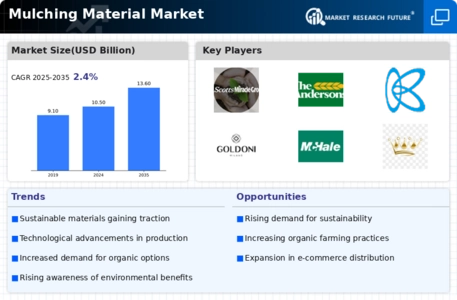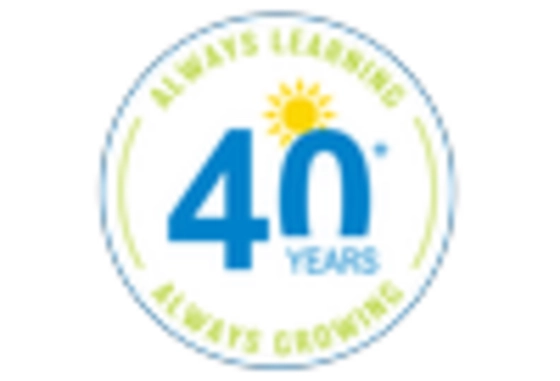Rising Demand for Landscaping
The rising demand for landscaping services is likely to bolster the Mulching Material Market significantly. As urbanization continues to expand, there is an increasing need for aesthetically pleasing outdoor spaces, which often necessitates the use of mulch. Landscaping professionals are increasingly utilizing various types of mulching materials to enhance the visual appeal of gardens and parks while also providing functional benefits such as moisture retention and weed control. Market data indicates that the landscaping sector has experienced robust growth, with a projected increase in expenditure on outdoor beautification. This trend suggests that the Mulching Material Market will benefit from the heightened focus on landscaping, as consumers seek to create attractive and sustainable outdoor environments.
Sustainable Agriculture Practices
The increasing emphasis on sustainable agriculture practices appears to be a pivotal driver for the Mulching Material Market. Farmers and gardeners are increasingly adopting mulching techniques to enhance soil health, conserve moisture, and suppress weeds. This trend is likely influenced by the growing awareness of environmental issues and the need for sustainable food production. According to recent data, the adoption of organic farming practices has surged, with a notable increase in the use of biodegradable mulching materials. This shift not only supports soil fertility but also aligns with consumer preferences for eco-friendly products. As a result, the Mulching Material Market is expected to witness a steady growth trajectory, driven by the demand for sustainable solutions in agriculture.
Increased Awareness of Soil Health
The growing awareness of soil health and its critical role in sustainable agriculture is likely to drive the Mulching Material Market. As more farmers and gardeners recognize the importance of maintaining healthy soil ecosystems, the demand for mulching materials that promote soil fertility and structure is expected to rise. Educational campaigns and research initiatives have highlighted the benefits of mulching, such as improved moisture retention and reduced erosion. Market data suggests that regions with active soil health programs have reported increased sales of organic and natural mulching products. This trend indicates that the Mulching Material Market is poised for growth as stakeholders prioritize soil health in their agricultural practices.
Government Initiatives and Regulations
Government initiatives and regulations aimed at promoting sustainable land management practices appear to be a significant driver for the Mulching Material Market. Various governments are implementing policies that encourage the use of organic and biodegradable materials in agriculture and landscaping. These initiatives often include financial incentives for farmers and landscapers who adopt environmentally friendly practices. Recent statistics indicate that regions with stringent regulations on chemical fertilizers and pesticides have seen a corresponding rise in the use of organic mulching materials. This regulatory landscape is likely to propel the Mulching Material Market forward, as stakeholders seek to comply with these guidelines while enhancing their environmental stewardship.
Technological Innovations in Mulching Materials
Technological innovations in the development of advanced mulching materials appear to be a key driver for the Mulching Material Market. Recent advancements have led to the creation of innovative products that offer enhanced performance, such as biodegradable films and smart mulches that can regulate moisture levels. These innovations not only improve the efficiency of mulching practices but also cater to the growing demand for sustainable solutions. Market analysis indicates that the introduction of high-performance mulching materials has attracted interest from both commercial growers and home gardeners. As technology continues to evolve, the Mulching Material Market is likely to experience increased investment and growth, driven by the appeal of cutting-edge products.


















Leave a Comment